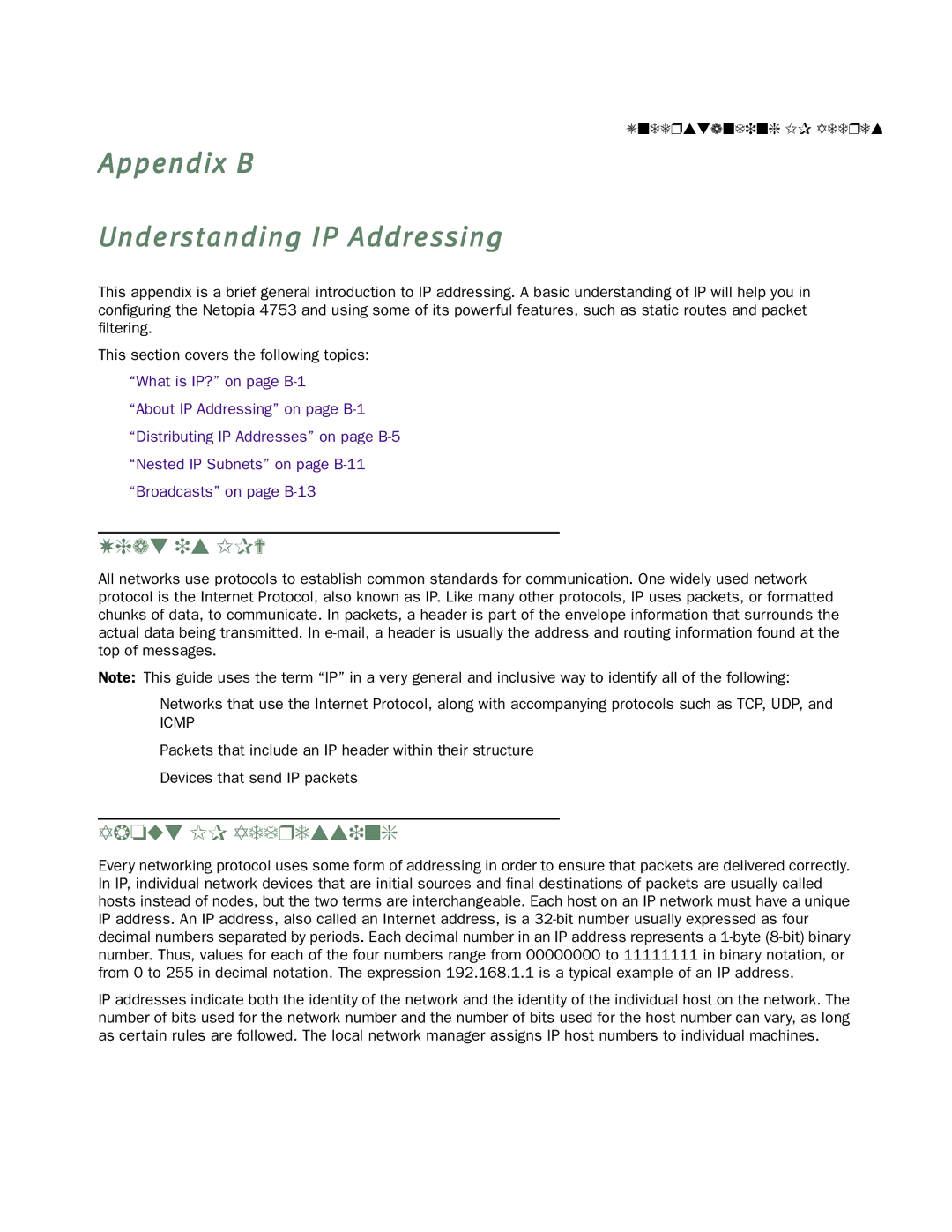
Understanding IP Addressing
Appendix B
Understanding IP Addressing
This appendix is a brief general introduction to IP addressing. A basic understanding of IP will help you in configuring the Netopia 4753 and using some of its powerful features, such as static routes and packet filtering.
This section covers the following topics:
■“What is IP?” on page
■“About IP Addressing” on page
■“Distributing IP Addresses” on page
■“Nested IP Subnets” on page
■“Broadcasts” on page
What is IP?
All networks use protocols to establish common standards for communication. One widely used network protocol is the Internet Protocol, also known as IP. Like many other protocols, IP uses packets, or formatted chunks of data, to communicate. In packets, a header is part of the envelope information that surrounds the actual data being transmitted. In
Note: This guide uses the term “IP” in a very general and inclusive way to identify all of the following:
■Networks that use the Internet Protocol, along with accompanying protocols such as TCP, UDP, and
ICMP
■Packets that include an IP header within their structure
■Devices that send IP packets
About IP Addressing
Every networking protocol uses some form of addressing in order to ensure that packets are delivered correctly. In IP, individual network devices that are initial sources and final destinations of packets are usually called hosts instead of nodes, but the two terms are interchangeable. Each host on an IP network must have a unique IP address. An IP address, also called an Internet address, is a
IP addresses indicate both the identity of the network and the identity of the individual host on the network. The number of bits used for the network number and the number of bits used for the host number can vary, as long as certain rules are followed. The local network manager assigns IP host numbers to individual machines.
